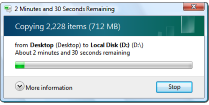RescueTime is “a personal analytics service that shows you how you spend your time [on the computer], and provides tools to help you be more productive.” Personally, I’ve been a RescueTime user since late-January 2016, and while it does ping me guilty for harking back to a dangling Facebook tab in Chrome, I haven’t yet dug much into the data it’s thus-far stored.
Create Inverted Music using Python
Ever wondered how inverted music would sound like? Do you know what the original song is of this inverted song (and don’t look at the URL!)? In this post, some MIDI files are inverted and it is shown how you can invert a MIDI file yourself.
Up and running with Apache Spark on Apache Kudu
After the GA of Apache Kudu in Cloudera CDH 5.10, we take a look at the Apache Spark on Kudu integration, share code snippets, and explain how to get up and running quickly, as Kudu is already a first-class citizen in Spark’s ecosystem.
Building Event-driven Microservices Using CQRS and Serverless
noreply@blogger.com (Kenny Bastani)
发表于
One of the most popular practices in event-driven architectures today is called CQRS, which is short for Command Query Responsibility Segregation. CQRS is a style of architecture that allows you to use different models to update and read domain data.
Crazy Progress Bars
||
| |If you use computers, you’ve experienced progress bars. Progress bars are incredibly useful; they give feedback on the status of non-trivial tasks.In addition to giving a visual feedback of the advancement of the task (through the use of a growing bar), most progress indicators give an estimate of the amount of time remaining.|
|If you use computers, you’ve experienced progress bars. Progress bars are incredibly useful; they give feedback on the status of non-trivial tasks.In addition to giving a visual feedback of the advancement of the task (through the use of a growing bar), most progress indicators give an estimate of the amount of time remaining.|
Becoming a Data Scientist Podcast Episode 15: David Meza
David Meza is Chief Knowledge Architect at NASA, and talks to Renee in this episode about his educational background, his early work at NASA, and examples of his work with multidisciplinary teams. He also describes a project involving a graph database that improved search capabilities so NASA engineers could more easily find “lessons learned”.
Data Cleaning, Categorization and Normalization
Definition of Clean Data
Journal: PLXtrum - realtime machine learning for predicting note onset
This system detects in real time when the note is coming by using a piezo and accelerometer on the plectrum. In this demonstration, we play noise between the prediction and the actual onset of the note to show you how far ahead we knew the next note was coming. The controller was optimized to predict 50ms ahead. The prediction is done with reservoir computing for the sensor fusion (also known as echo state networks).
Streaming Columnar Data with Apache Arrow
** Fri 27 January 2017
Where Predictive Modeling Goes Astray
I recently reread Yarkoni and Westfall’s in-progress paper, “Choosing prediction over explanation in psychology: Lessons from machine learning”. I like this paper even more than I liked their previous paper, but I think a few notes of caution should be raised about the ways in which a transition to predictive modeling could create problems that psychologists are seldom trained to deal with.